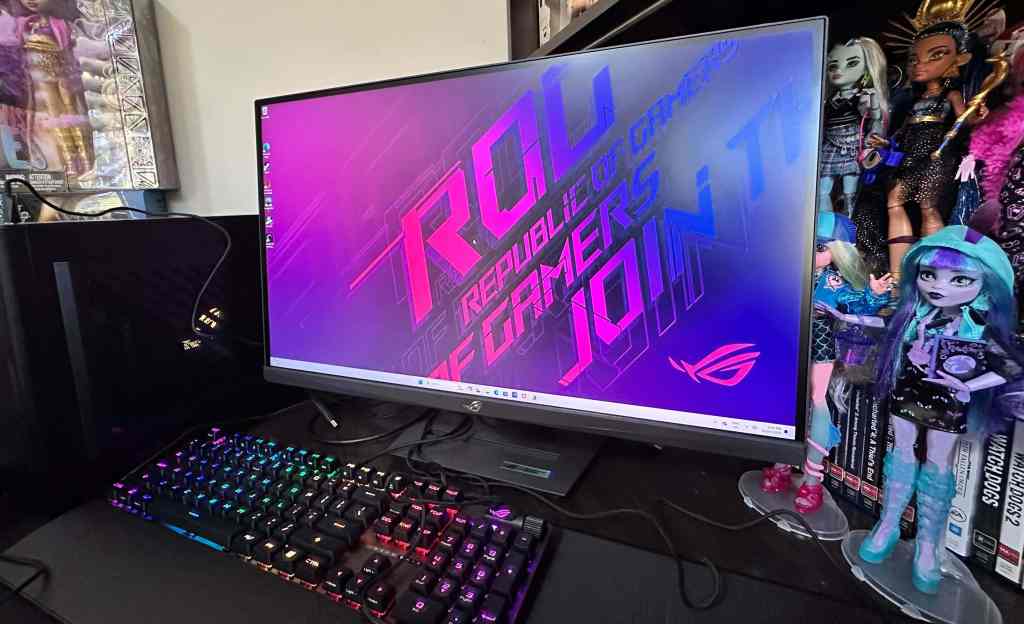The Asus ROG Strix XG27ACS Gaming Monitor initially underwhelmed me, by nature of its back bulk. Putting it together, I found its design reminded me of the early 2000s of PC gaming – it’s got a whopping bezel on the bottom of the screen, and a hefty grey stand with a fairly large, heavy foot. But once the monitor was in place, I immediately understood the purpose and value of its design.
Facing the monitor, you don’t really see the heft at its back. The screen is placed far enough forward on the stand that you only really get a hint of what lies behind. And in this design, the ROG Strix XG27ACS hides its best secret: it’s height adjustable, and can tilt at a range of angles, to best suit your working space.
The hydraulic system at the back of the XG27ACS is grand – smooth and easily manipulated, allowing you to position the screen any way you like. If you’ve got ample desk space, you can almost turn this monitor into a “standing monitor” without the need for a standing desk. It’s incredibly versatile in that regard, and feels relatively novel for these features.
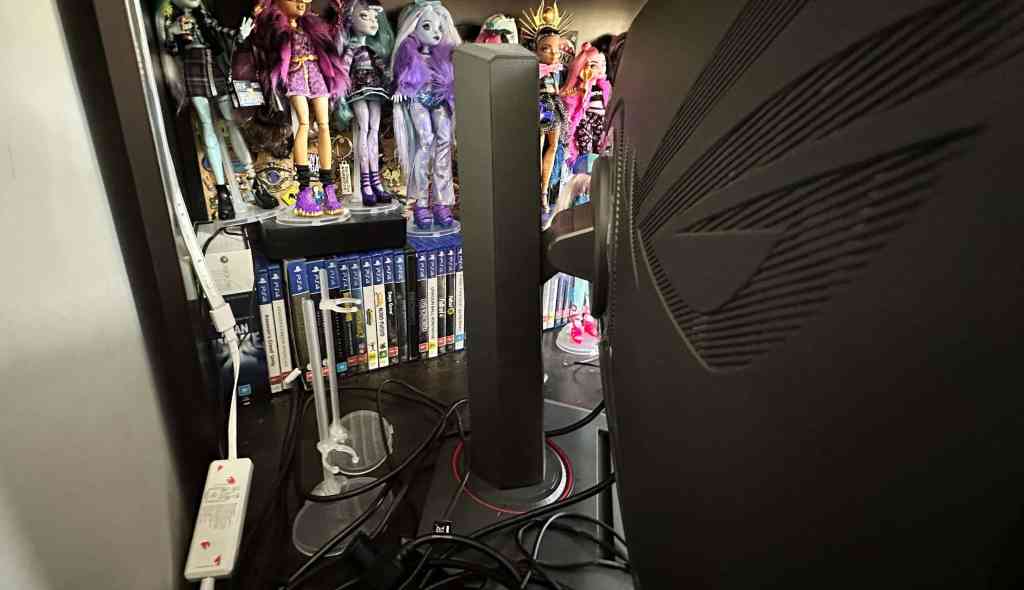
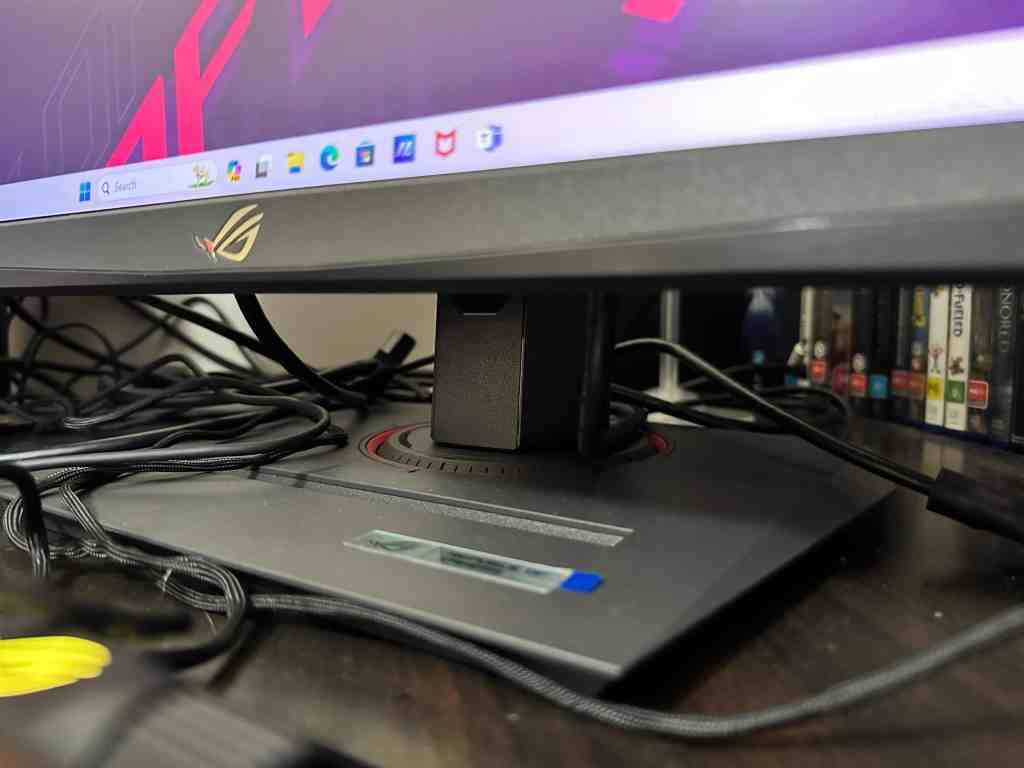
I’ve started here to focus on what is most eye-catching and different about the XG27ACS, compared to other standard gaming monitors. While adjustability isn’t a necessary feature in most cases, so far, it’s amplified my time with the XG27ACS, and allowed for a better and more ergonomic gaming setup than what I was rocking previously.
For one thing, the adjustability of the monitor allowed me to neatly fit the XG27ACS under the lower shelf of my desk, which meant I no longer had to twist to view my screen – but personal use will obviously differ.
As for the screen itself, it’s very impressive for its price point (around AUD $449 at retail) and performs consistently well. It’s snappy and responsive in action, as supported by its 180Hz refresh rate, and I noticed zero screen tearing or ghosting while playing newer games – No Rest for the Wicked and Resident Evil 2 (Remake), largely.
Perhaps my biggest bugbear while reviewing TVs, monitors, and gaming screens, is text going jaggy while I’m speeding past important locations. Anything static on screen, like a game’s UI, is at risk of blurring or artefacting on low refresh rate monitors. I’m rocking a TV set that’s around 7 years old now, and rendering solid text is a particular challenge for it – so I’m hyperaware of the issue when I’m testing new displays.
After dozens of hours gaming, I never noticed any issues with text or in-game action using the XG27ACS. Image was replicated with speed, accuracy, and zero input lag (likely thanks to the monitor’s 1ms response time), even when I maxed out the performance settings of Resident Evil 2, to the point where the game warned me I was being too ambitious.
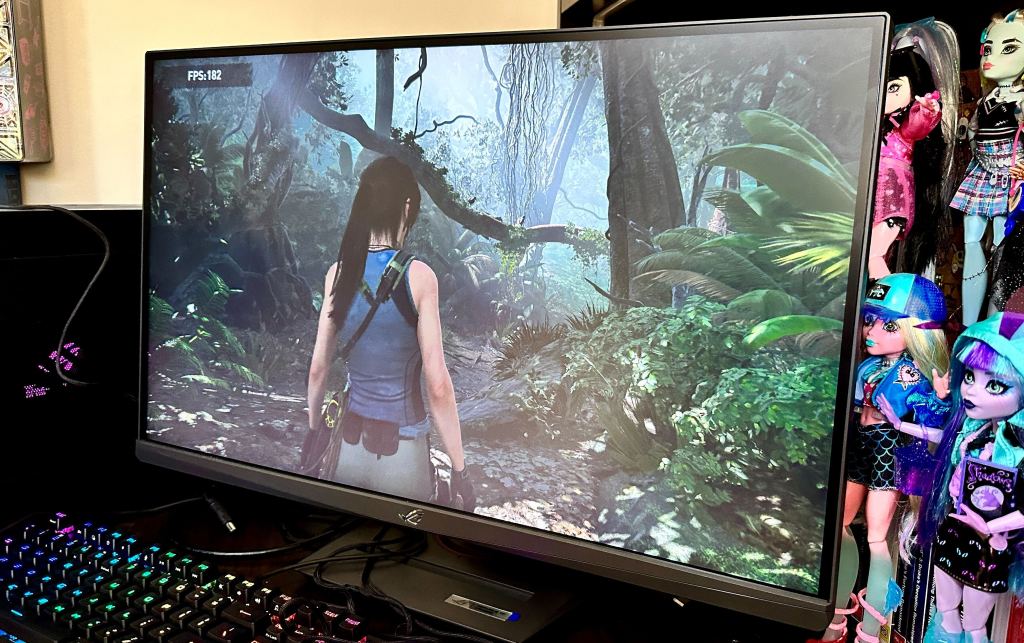
The monitor also has very good colour and brightness to support its smooth, responsive input, with minimal meddling needed to get the colours feeling right.
While playing Resident Evil 2, I did fiddle around with brightness and contrast, as the black point seemed washed out – but other games didn’t require the same adjustments. I suspect it’ll be case-by-case for each game you play, and you may be able to adjust settings in-game, rather than on screen.
It really was only minor adjustments needed here. As a QHD 1440p IPS display with a 180Hz refresh rate, the XG27ACS performs well. It’s not quite as sharp as an OLED panel, or a true 4K display, but it exceeds the bounds of its weight class, and even has its own HDR settings to “punch up” its performance.
In practice, this adds a touch of contrast and lightly-saturated pop to games, making shadows darker and colours more vivid. I experimented with HDR on/off while testing the monitor, and given the added richness it imbued, I’m not sure why you’d want it off. In either mode, you get a crisp, dynamic picture, but that added touch of HDR adds some dazzle.
With all that said, it’s worth noting I did have some minor issues with the monitor, particularly in its reflective nature and how it caught the light.
You can see the upper corner of the screen “fading” with the sun in my review images – this was an issue that dogged me any time I played games while the sun was out. I can see the XG27ACS’s matte reflectivity being a bugbear in a well-lit room, so it’s worth noting if you’ve got a similar setup. While its brightness combats this challenge somewhat, you can get washed out colours with enough light interference.
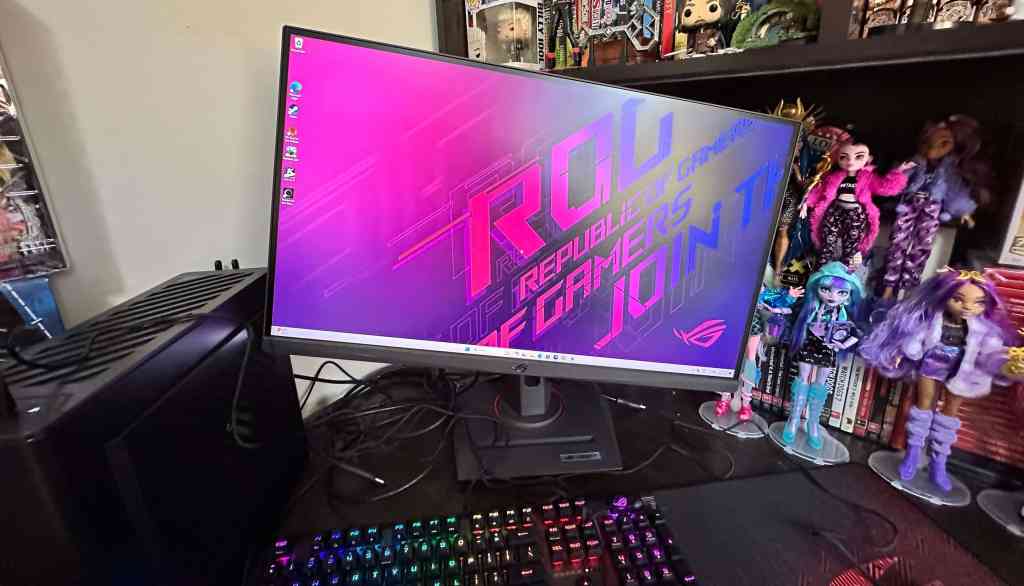
Beyond this annoyance, the XG27ACS has proved to be a reliable gaming companion. It’s a sturdy beast that will take up significant desk space, but it provides ample features and excellent adjustability for this sacrifice. And with such strong performance at its feature and price point, the sacrifice feels very worthwhile.
At around AUD $449, it’s one of the more affordable QHD/HDR compatible monitors on the market. If you’re looking to upgrade your setup, and you’re not quite ready for the pricier vibes of the 4K/OLED variety, this is a great middle-range gaming monitor with solid performance, and genuinely handy features.
Four stars: ★★★★
Asus ROG Strix XG27ACS
Release Year: 2024
Price: AUD $449–499 | USD $299
An Asus ROG Strix XG27ACS gaming monitor was loaned to GamesHub for the purposes of this review. GamesHub reviews are rated on a five-point scale. GamesHub has affiliate partnerships. These do not influence editorial content. GamesHub may earn a small percentage of commission for products purchased via affiliate links.
